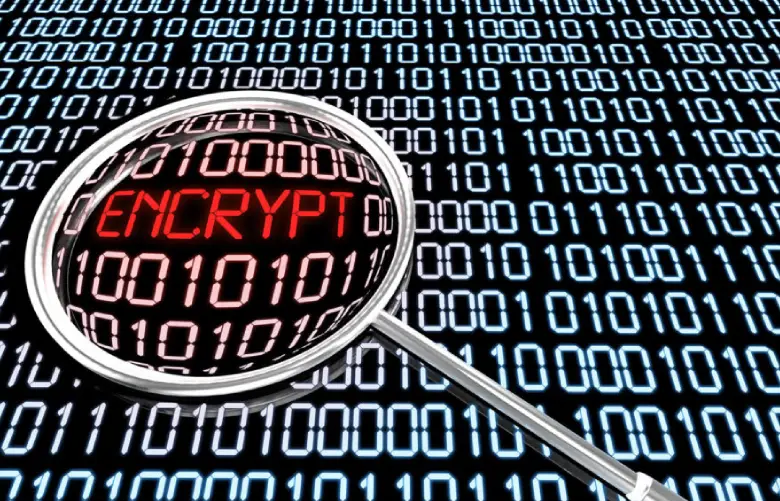Elliptic Curve Cryptography (ECC) plays a pivotal role in securing the digital world by providing a highly efficient and secure method for encrypting data, verifying digital signatures, and establishing secure communications over the internet. Unlike traditional methods of elliptic curve cryptography examples like RSA, ECC offers equivalent security with much smaller key sizes, making it a preferred choice for resource-constrained environments such as mobile devices and IoT devices.
Introduction to Elliptic Curve Cryptography (ECC)
ECC Elliptic Curve Cryptography is used in public-key cryptography. It offers security with relatively small key sizes, making it suitable for resource-constrained environments such as mobile devices and Internet of Things (IoT) devices.

Get curriculum highlights, career paths, industry insights and accelerate your technology journey.
Download brochure
Public and private keys in ECC Cryptography: How they are generated and used
To explain elliptic curve cryptography, each participant possesses a pair of cryptographic keys:
- Private Key Generation: A random number, usually denoted as ‘d’, is selected from a range determined by the order of the elliptic curve’s cyclic group.
- Public Key Derivation: The public key is generated by scalar multiplication of the elliptic curve’s base point (a predefined point) with the private key.

Elliptic Curve Diffie-Hellman (ECDH): Secure key exchange using ECC
ECDH is a key exchange protocol that utilizes the computational difficulty of solving the discrete logarithm problem in elliptic curve cryptography. It lets two parties secure a shared secret over an insecure communication channel.
Elliptic Curve Digital Signature Algorithm (ECDSA): Ensuring authenticity and integrity of digital messages
ECDSA is a digital signature of the ECC algorithm in cryptography. It ensures the authenticity and integrity of digital messages by allowing a sender to sign a message with their private key and the recipient to verify the signature using the sender’s public key. The elliptic curve cryptography algorithm steps are as follows:
- Signing:
- The sender hashes the message to produce a digest.
- The sender generates a random value ‘k’ and computes a point on the elliptic curve, denoted as ‘R,’ using scalar multiplication of the base point ‘G’ by ‘k.’
- The sender computes the signature component ‘s’ as the inverse of ‘k’ modulo the order of the cyclic group, multiplied by the sum of the hash of the message and the sender’s private key multiplied by ‘R.’
- Verification:
- The recipient hashes the received message to get the digest.
- The recipient computes the verification point ‘R’ using the received signature components.
- The recipient checks if the computed ‘R’ matches the ‘R-value in the signature and verifies whether the signature is valid.
How ECC encryption works?
Elliptic Curve Cryptography (ECC) is a cryptographic method that uses the mathematics of elliptic curves to provide strong security with relatively small key sizes.
Elliptic curve encryption involves the following steps:
- Key Generation: Generate a pair of cryptographic keys – a private key and a corresponding public key. The private key is kept secret, while the public key can be openly shared.
- Public Key Distribution: Share the public key with the intended communication partner(s).
- Message Preparation: Convert the message you want to encrypt into a suitable format, often a numerical value.
- Encryption: To encrypt the message:
- Choose a random number (known as the temporary key).
- Compute a point on the elliptic curve using the public and ephemeral keys.
- Use mathematical operations to derive the shared secret from this point.
- Perform a mathematical operation combining the shared secret and the message.
- The result of this operation is the encrypted message.
- Sending: Transmit the encrypted message to the recipient.
ECC decryption process using the corresponding private key
Elliptic curve cryptosystem decryption reverts the encrypted message to its original form using the recipient’s private key. Here’s how it works:
- Receiving: The recipient receives the encrypted message.
- Decryption: To decrypt the message:
- Use the recipient’s private key to compute a point on the elliptic curve.
- Use mathematical operations to derive the shared secret from this point.
- Apply the inverse mathematical operation used during encryption to extract the original message.
- Message Retrieval: The decrypted message is now recovered and can be read in its original form.
Elliptic curve cryptography and security rely on the difficulty of solving certain mathematical problems related to elliptic curves. Due to this mathematical complexity, a cryptography graph can provide strong security with smaller key sizes than traditional encryption methods like RSA.
Comparison of ECC encryption with other encryption method
Securing Data Transmission with ECC
One widely used method for securing data transmission is Elliptic Curve Cryptography (ECC). ECC stands out in several aspects compared to other encryption methods, providing robust security and efficient performance.
Digital Signatures and ECC
Key Size: Like RSA, Elliptic Curve Cryptography (ECC) provides better security with smaller key sizes. This is important for generating and transmitting digital signatures efficiently.
Signature Size: ECC cryptography generates shorter signatures than DSA for the same level of security. This contributes to faster signature generation and less overhead in data transmission.
Computational Efficiency: ECC operations are generally faster than DSA, making it a preferred choice for real-time applications.

ECC Implementation and Considerations
When implementing ECC Cryptography and selecting parameters for optimal security, consider the following factors:
Factors to consider when choosing ECC parameters for optimal security
Curve Strength: Choose a curve with a sufficient level of security. The curve’s size, often denoted by the number of bits in the prime or binary field, should be selected to withstand current and foreseeable future attacks.
Key Length: Longer keys provide greater security but might lead to slower computations. Strike a balance between security and performance based on your application’s requirements.
Curve Type: Decide between Weierstrass, Montgomery, or Edwards curve types. Each has its advantages in terms of efficiency and security.
Standardization: Opt for widely recognized and standardized curves by reputable organizations, such as NIST or SECG. This ensures that experts have scrutinized the curve’s design.
Conclusion
The advent of the digital age has brought unprecedented opportunities and challenges, and at the heart of this transformation lies the critical need for robust cybersecurity measures. The elliptic curve cryptography algorithm delves into one of the most ingenious solutions to safeguarding our digital interactions and sensitive data.
FAQs
The Elliptic curve cryptograph algorithm is considered highly secure and efficient compared to traditional public-key cryptography systems like RSA. ECC cryptography's security is based on the difficulty of solving certain mathematical problems related to elliptic curves.
Elliptic curve cryptography operates on the algebraic structure of elliptic curves over finite fields. ECC uses elliptic curve groups in which mathematical operations like point addition, point doubling, and scalar multiplication are well-defined. The two main components of ECC are the public key (a point on the curve) and the private key (a scalar value).
Elliptic Curve Cryptography offers several advantages over traditional public-key cryptography:
Strong Security: ECC provides the same level of security as other public-key algorithms but with shorter key lengths. This results in faster computations and lower resource requirements.
Smaller Key Sizes: ECC keys are significantly shorter than RSA ones while providing equivalent security. This is particularly advantageous in resource-constrained environments like IoT devices.
Faster Computations: ECC operations require fewer resources and less computational power, making it suitable for devices with limited processing capabilities.
Implementing Elliptic Curve Cryptography involves selecting an elliptic curve and a base point on that curve. The curve's parameters and base point are standardized for various security levels.
Key Exchange: Elliptic Curve Diffie-Hellman (ECDH) allows parties to exchange keys over an insecure channel securely.
Digital Signatures: The Elliptic Curve Digital Signature Algorithm (ECDSA) enables the creation and verification of digital signatures, ensuring message integrity and authenticity.
Encryption: The Elliptic Curve Integrated Encryption Scheme (ECIES) is used for encrypting and decrypting messages using ECC.
Blockchain and Cryptocurrencies: Many blockchain networks, including Bitcoin and Ethereum, use Elliptic Curve Cryptography for digital signatures and key management.










